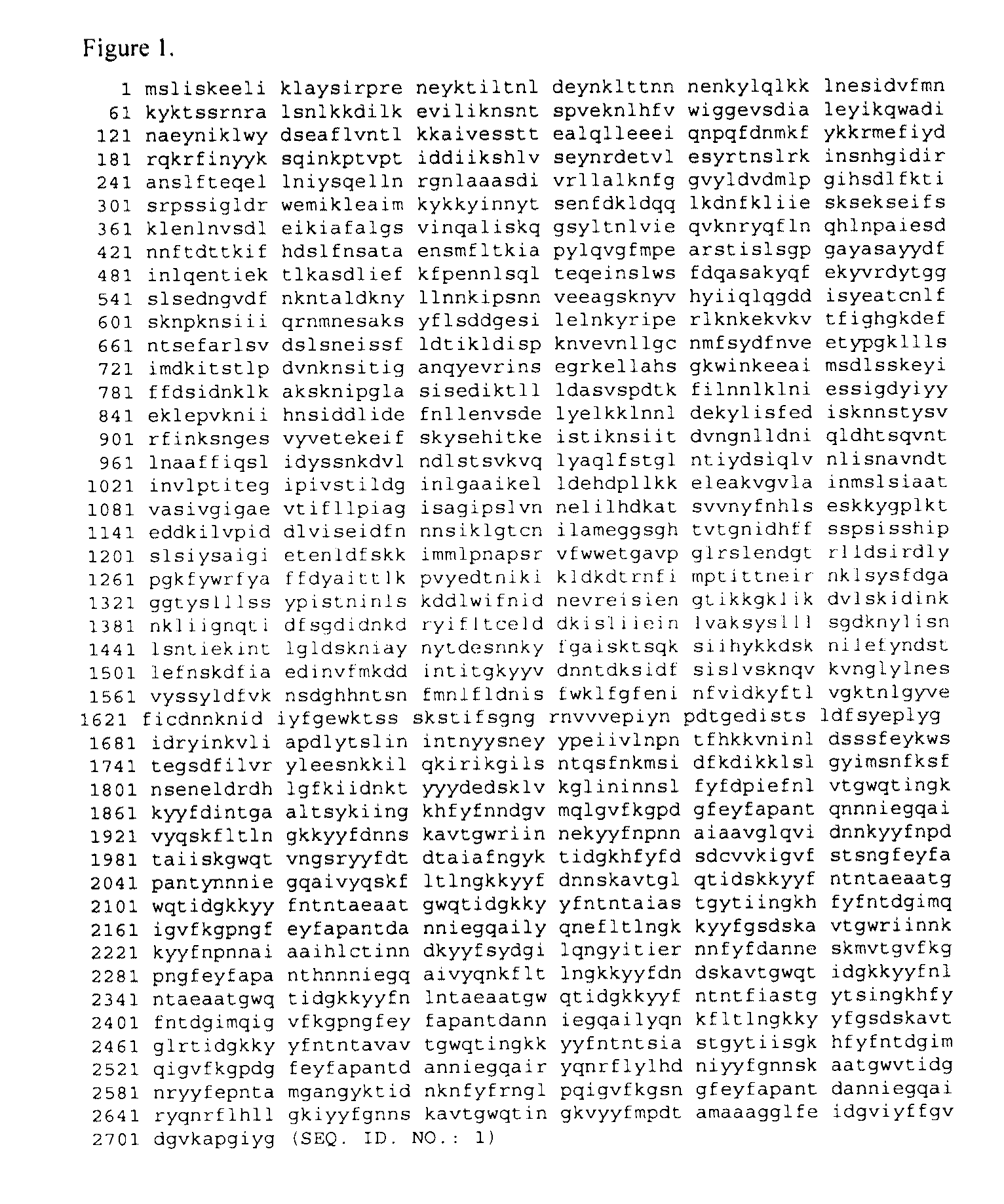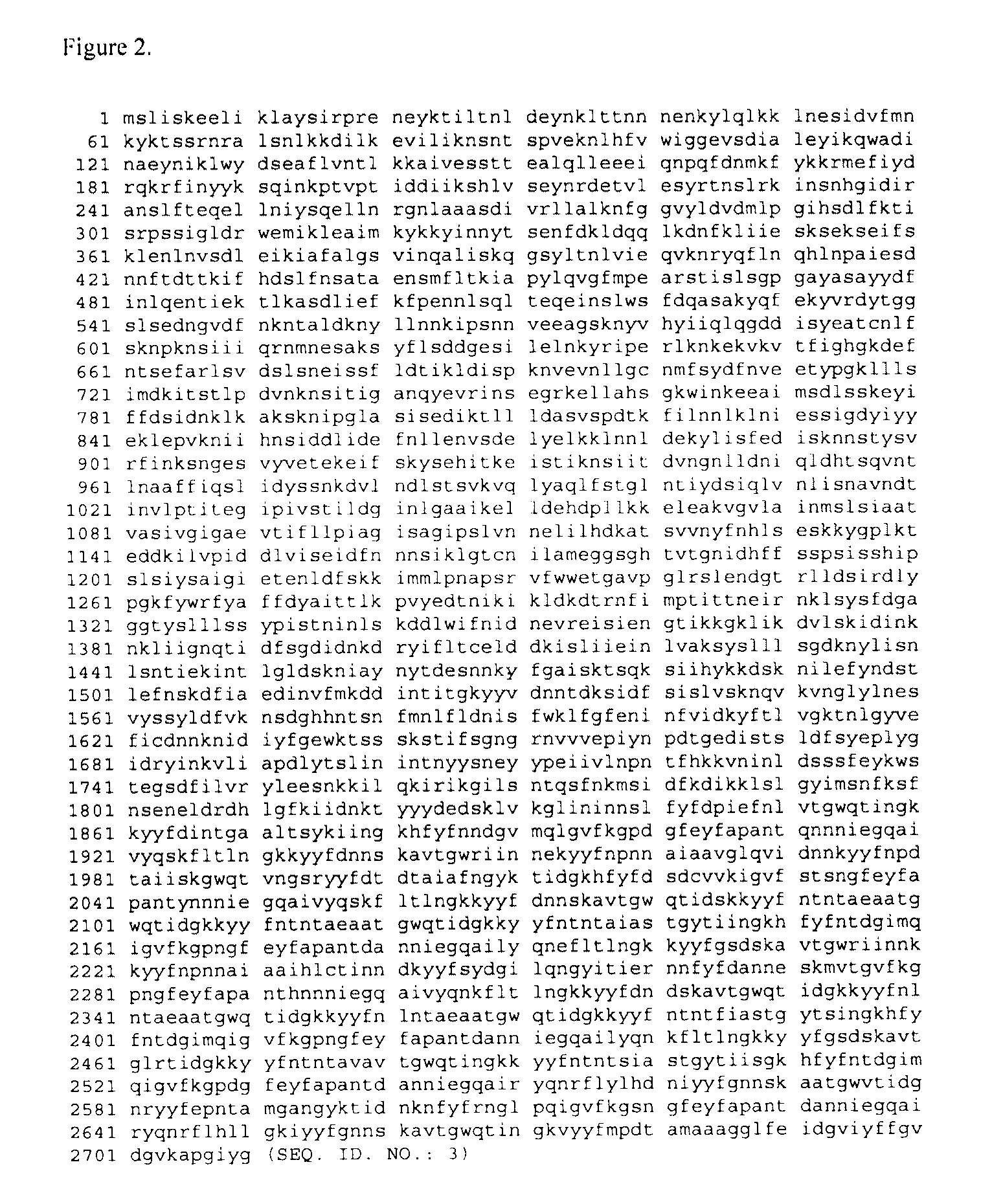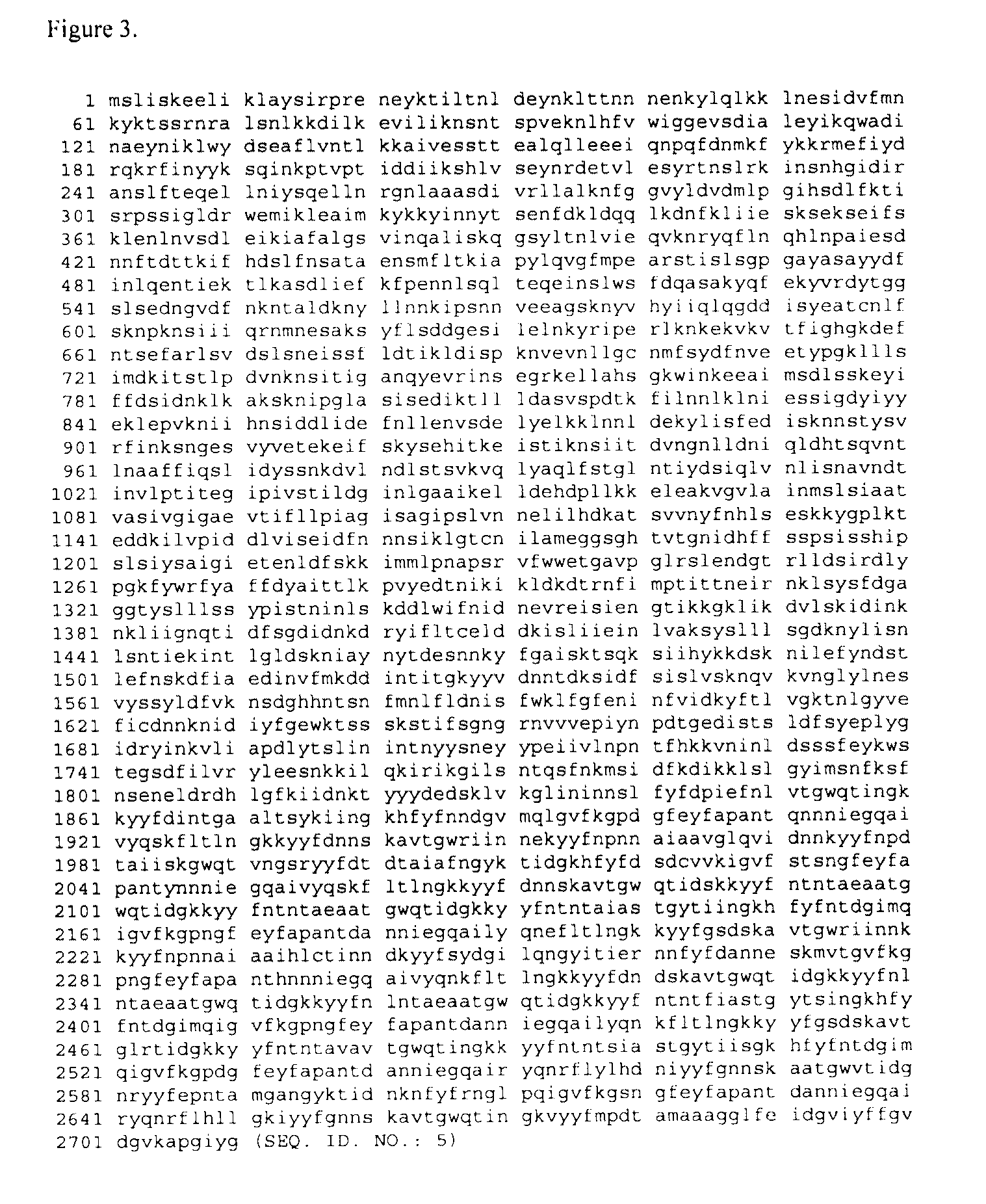Codon-Optimized Dna Molecules Encoding the Receptor Binding Domains of Clostridium Difficile Toxins A and B, and Methods of Use Thereof
a technology of clostridium difficile and dna molecules, which is applied in the field of codon-optimized dna molecules encoding the receptor binding domains of clostridium difficile toxins a and b, can solve the problems of poor anti-toxin immune response, metronidazole appears less effective than vancomycin for severe i>c, and inability to prevent relapse, so as to increase the amount of dna molecul
- Summary
- Abstract
- Description
- Claims
- Application Information
AI Technical Summary
Benefits of technology
Problems solved by technology
Method used
Image
Examples
example 1
Antibody Generation
[0132]Endotoxin-free plasmid preparations were obtained from Aldevron Inc, Fargo N. Dak. Plasmids were diluted in sterile saline to a concentration of 100 μg in 50 μl of saline. Five groups of 3 BALB / c mice (Charles River Laboratories) were obtained and injected with DNA. Group 1 received pVAX™ vector; Group 2 received TxA-RBD alone, standard intramuscular (IM) injection; Group 3 received tPA-TxA-RBD, IM injection; Group 4 received TxA-RBD alone, IM electroporation; Group 5 received tPA-TxA-RBD, IM electroporation.
[0133]Mice were vaccinated at weeks 0 and 2 with 100 μg in 50 μl of saline in the right rear limb. Blood was drawn and serum isolated at prevaccination (week 0) and at conclusion of study, week six.
[0134]Serum was analyzed by ELISA using commercial toxin A as the binding antigen on high protein binding Costar Plates, and commercial anti-mouse horseradish-peroxidase (HRP) as the secondary antigen. ELISA was developed using the DAKO development system.
[013...
example 2
Plasmid Design for TxA-RBD and tPA-TxA-RBD Plasmids
[0136]The following plasmids were constructed using standard techniques for cloning (Sambrook, et al., Molecular Cloning: A Laboratory Manual (1989)).
[0137]The full length amino acid sequence corresponding to the toxin A protein of C. difficile strain VPI 10463 (GenBank Accession No. AAA23283, see FIG. 3) was assessed and residues corresponding to the putative receptor-binding domain that occupy the carboxy-terminal third of the protein was identified (FIG. 16A). The amino-acid sequence of the RBD was back-translated in silico to a novel genetic sequence using those codons most commonly employed by human cells (http: / / www.entelechon.com / ). A Nhe1 restriction sequence, kozak sequence, and methionine start site occupy base-pairs 1-16 of SEQ. ID. NO.: 12 (FIG. 8). The optimized gene is comprised of base pairs 23-2641 of SEQ. ID. NO.: 12 (FIG. 8). Finally, an EcoR1 restriction sequence was included at the 3′ end and a BamH1 restriction ...
example 3
In Vitro Expression of TxA-RBD
[0139]293T cells were split twenty-four hours prior to transfection and plated in a 12 well dish at a concentration of 5×105 cells per well in DMEM with 10% inactivated FBS (v / v) (Gibco) and 1% Penicillin-Streptomycin (Gibco). Twenty-four hours post plating, cells were transfected with 2 μg of plasmid DNA, TxA-RBD, TxB-RBD, tPA-TxA-RBD, tPA-TxB-RBD, or pVAX™-GFP (as a negative control) using Lipofectamine™ 2000 (Invitrogen, Calsbad, Calif.) per the manufacturer's instructions.
[0140]Forty-eight hours post-transfection, supernatant and / or cell lysates were collected. Supernatant was clarified by centrifugation at 22,000×g for 30 minutes prior to immunoblot. Samples were stored at −20° C. until assay performance.
[0141]Immunoblots were performed using the Invitrogen SureLock™ system according to the manufacturer's recommendations. Briefly, 32.5 μl of sample was added to 12 μl NuPAGE LDS loading buffer and 5 μl of reducing agent and heated to 70° C. for 10 m...
PUM
| Property | Measurement | Unit |
|---|---|---|
| Fraction | aaaaa | aaaaa |
| Fraction | aaaaa | aaaaa |
| Fraction | aaaaa | aaaaa |
Abstract
Description
Claims
Application Information
 Login to View More
Login to View More - R&D
- Intellectual Property
- Life Sciences
- Materials
- Tech Scout
- Unparalleled Data Quality
- Higher Quality Content
- 60% Fewer Hallucinations
Browse by: Latest US Patents, China's latest patents, Technical Efficacy Thesaurus, Application Domain, Technology Topic, Popular Technical Reports.
© 2025 PatSnap. All rights reserved.Legal|Privacy policy|Modern Slavery Act Transparency Statement|Sitemap|About US| Contact US: help@patsnap.com



